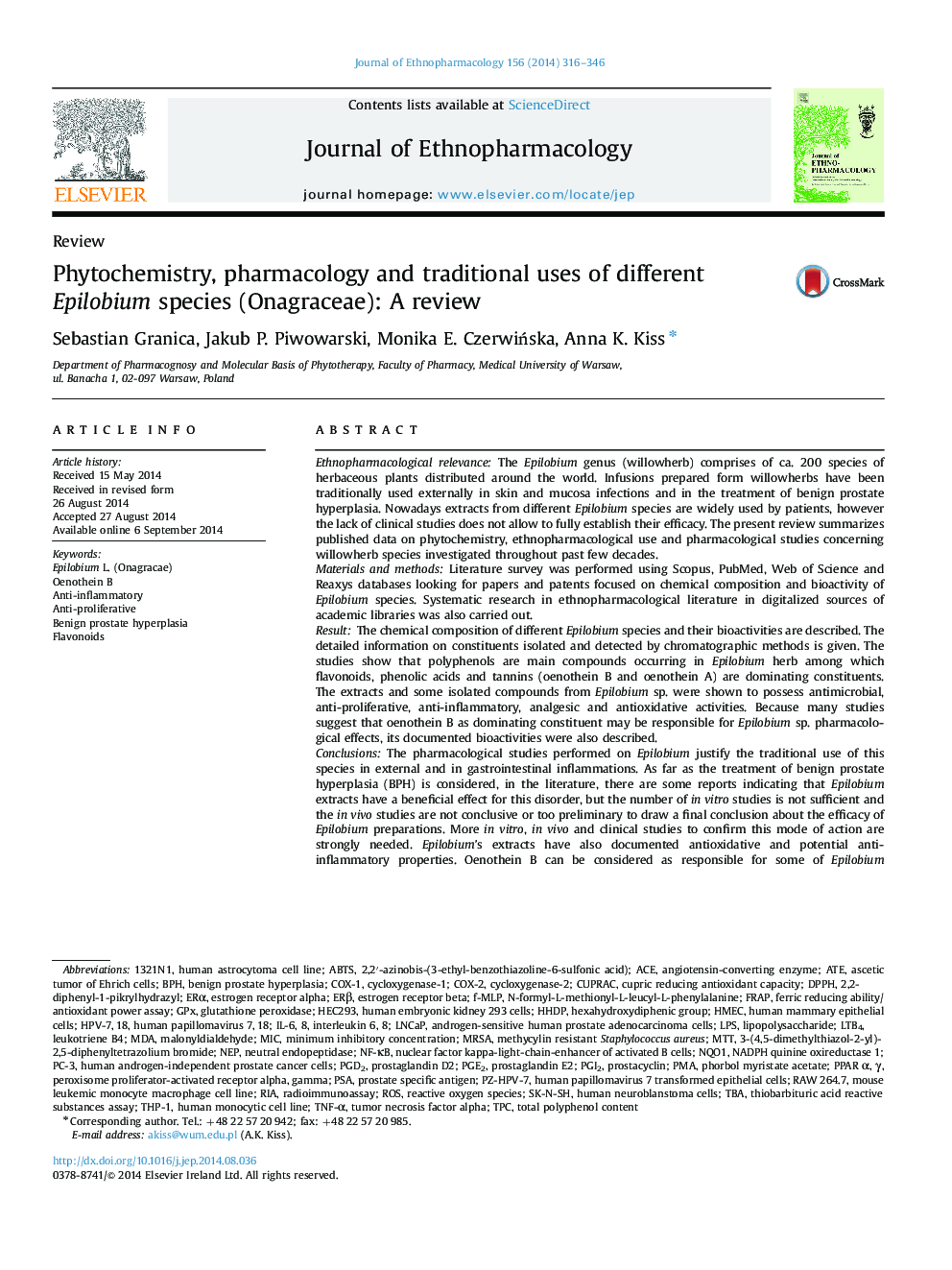| کد مقاله | کد نشریه | سال انتشار | مقاله انگلیسی | نسخه تمام متن |
|---|---|---|---|---|
| 2545234 | 1560405 | 2014 | 31 صفحه PDF | دانلود رایگان |

Ethnopharmacological relevanceThe Epilobium genus (willowherb) comprises of ca. 200 species of herbaceous plants distributed around the world. Infusions prepared form willowherbs have been traditionally used externally in skin and mucosa infections and in the treatment of benign prostate hyperplasia. Nowadays extracts from different Epilobium species are widely used by patients, however the lack of clinical studies does not allow to fully establish their efficacy. The present review summarizes published data on phytochemistry, ethnopharmacological use and pharmacological studies concerning willowherb species investigated throughout past few decades.Materials and methodsLiterature survey was performed using Scopus, PubMed, Web of Science and Reaxys databases looking for papers and patents focused on chemical composition and bioactivity of Epilobium species. Systematic research in ethnopharmacological literature in digitalized sources of academic libraries was also carried out.ResultThe chemical composition of different Epilobium species and their bioactivities are described. The detailed information on constituents isolated and detected by chromatographic methods is given. The studies show that polyphenols are main compounds occurring in Epilobium herb among which flavonoids, phenolic acids and tannins (oenothein B and oenothein A) are dominating constituents. The extracts and some isolated compounds from Epilobium sp. were shown to possess antimicrobial, anti-proliferative, anti-inflammatory, analgesic and antioxidative activities. Because many studies suggest that oenothein B as dominating constituent may be responsible for Epilobium sp. pharmacological effects, its documented bioactivities were also described.ConclusionsThe pharmacological studies performed on Epilobium justify the traditional use of this species in external and in gastrointestinal inflammations. As far as the treatment of benign prostate hyperplasia (BPH) is considered, in the literature, there are some reports indicating that Epilobium extracts have a beneficial effect for this disorder, but the number of in vitro studies is not sufficient and the in vivo studies are not conclusive or too preliminary to draw a final conclusion about the efficacy of Epilobium preparations. More in vitro, in vivo and clinical studies to confirm this mode of action are strongly needed. Epilobium’s extracts have also documented antioxidative and potential anti-inflammatory properties. Oenothein B can be considered as responsible for some of Epilobium pharmacological properties. Because of the lack of clinical data further studies are needed to provide an evidence base for traditional uses of plant materials belonging to the Epilobium genus.
Figure optionsDownload high-quality image (295 K)Download as PowerPoint slide
Journal: Journal of Ethnopharmacology - Volume 156, 28 October 2014, Pages 316–346